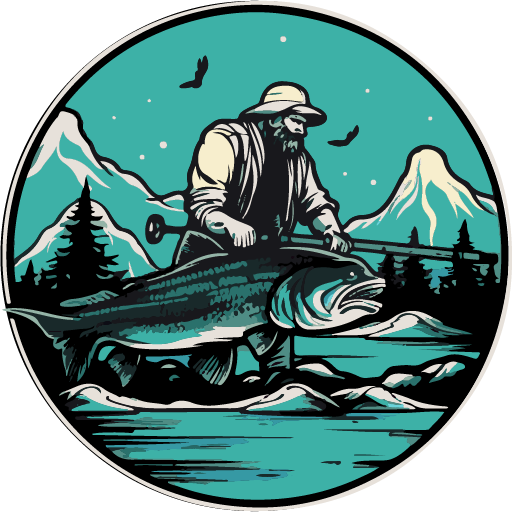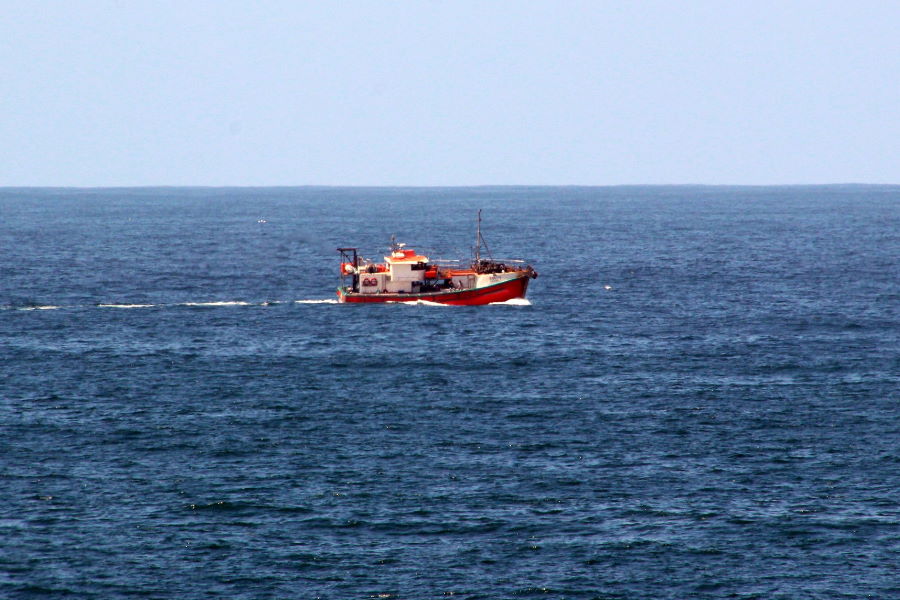How Should You Pass a Fishing Boat?
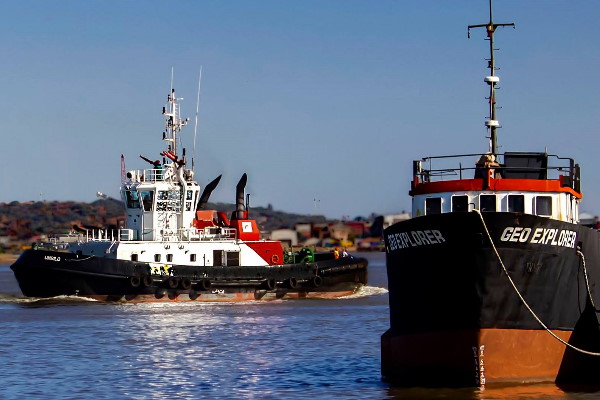
When you’re out on the open water and see a fishing boat ahead, should you pass it on the left or right? and How should you pass a fishing boat?
As a consumer, you may not think about how to pass a fishing boat properly. However, as a responsible boater, it’s important to know the proper way to do so.
In this blog post, we’ll provide tips on how to execute them correctly.
We’ll also highlight some of the hazards that can occur when passing a fishing boat improperly. So, whether you’re an experienced boater or just starting, read on for information on how should you pass a fishing boat safely.
Why Is It Important to Follow the Boat Passing Rules?
Before learning How should you pass a fishing boat? you must know about the importance of following the Rules.
When passing a fishing boat, it’s essential to follow the proper rules and procedures at all times.

With so many boats registered in America, there’s always an increased risk of accidents. While boating provides a wonderful time on the water—with rules to follow for your safety and others, you should understand that we’re not all familiar with how traffic works out here as some may think!
To properly Navigate this tricky subject matter let’s compare it against roadways- which most people are naturally acquainted with due to their everyday usage. It must be said that no one will drive a car into the street, and pass other cars without knowing what exactly constitutes “traffic laws”.
In the same way that you would never speed, swerve or cut someone off while driving a car on public roads, it’s equally important to follow these rules while operating a boat.
Not only is it dangerous and irresponsible to ignore navigational regulations when boating, but it’s also illegal in most states.
When you are out on the water, it is important to follow certain rules for everyone’s safety. These laws have been put into place by Federal Government agencies because they know that without these guidelines boat traffic would become chaotic and many people could get hurt or worse yet killed!
As an officer of a vessel- whether large like Seenotter PP rand smaller craft such as kayaks – if not following correct procedure can lead directly towards disaster so please do everything within your power to avoid accidents at all costs by paying attention while underway.
If there happens however another accident despite best efforts then seek assistance from whoever may possess knowledge.
Protocols for Passing a Vessel
The first step to passing a fishing boat is knowing what all of these terms mean. From top to bottom, you have your bow is the top; the hull is the body; the port means the left while Starboard stands right; and last, the stern is the back.
The US Coast Guard has issued several protocols for the safe passing of another boat. These guidelines are designed to teach boaters how they can pass a fishing vessel, including those unfamiliar with this type of activity, and what rights come along with doing so.
In general terms, then here are some basic concepts that govern these interactions:
– When two vessels approach each other it is best if one takes “give way” while the other is ‘stands on
– The “give away” vessels will yield the “stand on” vessel so long as there isn’t any collision between decks.
-The “stand on” vessels is the one who tries to pass the “give away” vessels.
– Both of them need to give a signal if they want to move or stop.
– It’s vital that both parties act responsibly and carefully to avoid accidents.
Now you know the protocols, next is How should you pass a fishing boat?
How should you pass a fishing boat?
Slow down
As the passing boat approaches, its skipper should slow down and prepare for an encounter.
To ensure safety in this situation by maintaining enough distance between them so that there will be no collision or other accidents occurred due to proximity at sea – which could potentially cause significant damage on both sides involved as well as loss of life.
Signal
When you come across a fishing vessel, make contact with its captain as soon as possible. Unless they see or hear from you first and know that it’s safe to pass without getting too close for hull collision risks. That can get tricky since we don’t want them changing direction while nearby.
The horn should be sounded when approaching from either side. Use one blast to signal that you are coming in the starboard side and two short sounds for the port side.
Waiting
This is a courtesy to the other boat and a safety measure as well because it can take some time until all of their crew members have seen what’s happening ahead on shore or if fish are hocking nearby.
When you give the signal, you should wait for confirmation. It could be a long wait depending on where they are fishing from as well as what kind of boat it is that does all this work – but don’t worry!
There’s always something going down at these types of parties so make yourself comfortable while waiting with some drinks or snacks close by (only remember not to drink until we say Bottoms Up!).
However, they will let us know when it’s safe again so we can pass through clear water quickly!
NEVER pass by without stopping first if the driver gives signals that he’s ready – otherwise, there is no way of knowing whether or not these people saw what was happening on board our vessel at any point during our encounter with each other(s).
Pass On The Port Side
As a general rule, you should always pass on the port side of vessels – this is to ensure that safety rules are followed and there’s no chance of a collision.
The other captain will be expecting you to pass them on your left or port side. If this isn’t done, there is a hazard in store for both parties as they don’t know what might happen next.
If we pass them from their left-hand side or portside, they have more view as this allows for clearer vision and avoids any hazardous situations that could arise with an unsure driver.
Furthermore, since most boats are wider at sea level than land-based vehicles, there’s no risk whatsoever by taking our time getting across, so long distances until reaching wherever may destination may lead us next!
When the passing boat is ready, it will honk or blast its horn once.
This gives other vessels plenty of warning that they are about to be passed and provides a safer passage for both parties involved in this exchange between ships!
In some situations, it might be impossible for you to pass them on the port side. If this is the case, It’s important to let the passing boat know that you will be passed on their starboard side.
Make sure that the person who will have been passed by should communicate with both sides and make sure everything’s clear before proceeding so nobody gets too close without knowing where things stand.
They should blast or honk twice when it is clear, so there are no surprises for either party involved in this transaction!
Pass Slowly
When passing another vessel, it is important to keep your speed at a minimum and avoid making waves or pulling up fishing lines. A large wave could be dangerous for the fishing vessel. It might rock the boat and toss someone or their gear off the edge.
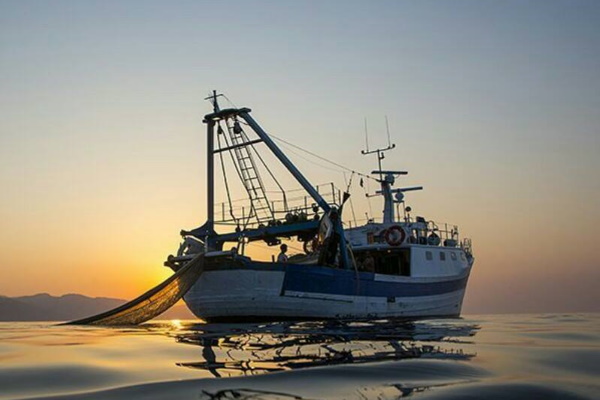
Even if you do not intend to pass the boat, slow down for safety!
We hope you can use these guidelines next time around, so no one gets hurt on either side of this passage.
What speed is appropriate?
The key to passing another vessel is slowing your speed. This way you reduce the risk of producing waves that might cause collision between both crafts.
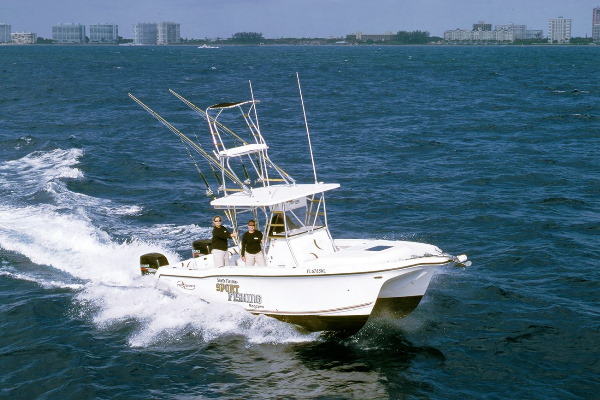
To pass by traveling at 2 knots faster than your counterpart in order not to create any discomfort for those around us especially when we’re on board our pleasure craft where every detail matters!
If the other captain slows their speed to 4 knots, you can easily pass them at 6 knots.
This number will depend on how much—or little–they can slow down. If they’re traveling 8 knots, it will be 10 knots for you; but it is not ideal, it is best that slow down more.
So if you’re the one being passed, try lowering your travel speeds down to 4 knots in these circumstances!
That’s all knowledge about “How should you pass a fishing boat?” next you need to know about safety.
More tips for safety
Besides knowing How should you pass a fishing boat? You also need to know more tips to stay safe, they are:
Maintain a safe distance
While fishing from a boat on the open water, it is important to keep your distance and give other boats plenty of room. If you see a boat coming towards your direction and they are not yet in view, give them space so as not to get too close or cut across their path without permission.
This will ensure that any accidents do not happen at all. Remember common sense when out there with just about everything else – don’t cut right next to them because they might hit one side before reaching another, which could cause injury.
If there are waves while navigating through ocean waters- try going over these instead if possible.
Do not make any sudden moves
Fishermen should always be aware of their surroundings when fishing, especially other boats.
It is never a good idea to suddenly pass another vessel as this may cause an accident and startle them resulting in unnecessary damage or injury for both parties involved!
While overtaking doesn’t touch or bump into it; also avoid waving at ships with your hand like we all know how much trouble those can give us. Additionally, make sure that you drive equally as slow so others sharing the waterway have plenty of time to prepare themselves accordingly.
Watch out for fishing lines
When sailing close to another boat, it is important to watch for fishing lines. These thin plastic or metal cables can be stretched between boats and may easily snag on your propellers or rigging as you pass by them – which would cause serious injury if they were pulled taut!
If you see one of these stretches in their direction (or anything else), stay away until we’ve had time safe-sized up this situation first with safety equipment at hand before getting closer than necessary…
High concentration and proper observation
Maintaining full concentration while passing through waters is important to avoid unforeseen obstacles that may appear, such as swimmers or boats coming from either direction.
Confusion about which way things are located around you can cause accidents when trying not to look away briefly-it takes your eyes off what’s ahead!
The captain should use all their common sense to prevent any collision that will endanger the passengers. If this kind of danger can be avoided by passing on either side, they must do so and not stick with rules just for the sake of tradition because it’s more important than protecting themselves and others.
Other tips:
Don’t cut corners when passing other vessels as it can lead to an unexpected collision.
Keep a lookout for any signals the passing vessel might give you, such as honking or flashing its lights.
Make sure everyone on board is wearing life jackets and paying attention to what’s happening around them at all times!
It’s also important to stay vigilant with your navigation equipment—checking regularly for any potential hazards that may be coming our way!
Remember- if it looks close, chances are it is too close – slow down either way and you’ll be alright.
Keep communication open between both parties involved in the pass-by; this way there won’t be any surprises from either side when things get underway! That wraps up our guide on how to safely pass by another vessel.
Finally, it should also be noted that all vessels should avoid collisions with each other; this means taking every possible action available to make sure both parties are safe and sound at all times!
The most important rule when fishing on a boat is safety first – always pay attention to other vessels nearby and ensure that communication takes place before approaching another vessel.
By following the correct navigational rules, you’ll minimize your risk of any accidents occurring out at sea which will help everyone enjoy their time fishing safely!
Also, remember that some rules may vary depending on local regulations, so make sure to check with your state’s fishing laws before heading out. Good luck and happy fishing!
The right-of-way hierarchy on our waterways
In addition to knowing How should you pass a fishing boat? You also need to know more tips to stay safe, they are
The right-of-way hierarchy on our waterways can be a bit confusing, but it’s important to remember that everyone should do everything in their power when operating any type of watercraft.
The highest priority goes towards those who are overtaken by another boat or vessel without crew members onboard; then comes the next group with passing privileges from the greatest level down as follows:
Unmanned vessels
Vessels with limited maneuverability because their gears (such as fishing nets) are in the water
Vessels with restricted or limited navigation
Fishing boats that are actively engaged
Sailboats
Powered boats
Fishing boats have the right of way to other vessels, including powerboats and sailboats. That’s why boaters should wait for clear signals from them before passing, but if they’re just trolling without actively engaged then their priority is equal to a powerboat.
Special Situations
How should you pass a fishing boat in special situations?
It’s important to know that there are special situations that can alter the pre-existing hierarchy, such as when a vessel is overtaking another or the weather conditions become too dangerous for any kind of navigation.
In these cases, boaters must use their common sense and follow the same safety procedures we outlined earlier in this guide.
Some common situations:
Head-on
When you face a fishing vessel head-on, either of the two captains needs to pass one another on their port sides. Both of you need to ensure clear communication.
This can be done by slowing down and letting them know that they have been seen or making sure there’s enough room between your boat before attempting any passing maneuver.
Space between your boat/vessel combo will depend largely upon how big theirs is.
Crossing
Fishing boats have special rules when it comes to passing each other. If you encounter a fishing vessel without any lines or gear in the water, then your passage will be governed by general boating laws.
But if you cross their path and they’re on your starboard side, you are considered “stand on” boats, then expect some yielding from them (the “give away) while crossing over so as not to cause an accident or collision with fishing lines attached!
If another boat is approaching your portside though–you must yield until passed.
At night
When you’re out on the water at night, it can be difficult to see what is happening around your boat. Many things could damage or collide with yours if not careful- especially because of how dark everything becomes!
To avoid this problem slow down and reduce speed while navigating through these hazardous waters as much as possible before taking any actions necessary.
Knowing the different lights of boats is important for safe navigation. You should know that the front left light comes in red, while the right-hand side has a green signal; the white backlight sits above the elevated platform at the rear.
Narrow Quarters
When you and the fishing boat are on a tight waterway, there is a high risk of collision.
In this case, be sure to head toward their starboard side and create some room. The captain will do likewise if they are able- but it may not always work out that way!
If channels aren’t wide enough for two boats at once, yield the larger vessel until it’s out of that tight spot.
Make sure every inch counts before moving forward because even something minor can quickly turn into an expensive incident if nothing else goes wrong.
Sailboats
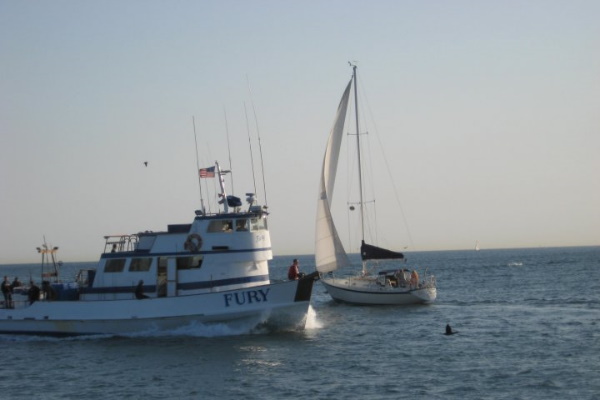
Sailboats have limited maneuverability relative to other vessels, so they have right of way to overpower vessels. However, this rule does not apply to a power sailboat.
Besides, sailboats have a lower priority than fishing vessels when it comes to the right of way.
Moreover, if you meet a larger one on tight waters, they will give the larger ship precedence. The same applies if a sailboat is passing a powerboat: that powerboat has the right of way.
An anchored fishing vessel has the privilege over a sailboat. Stay away unless you want some line wrapped around your propeller. The last thing you want is those long lines wrapped around our propellers!
Foggy Or Stormy Weather
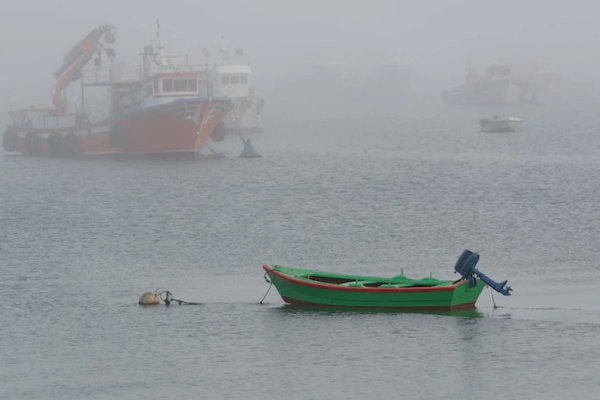
Fog or stormy weather can make navigation very difficult. Keep in mind that other vessels may be navigating nearby and it’s important to sound your horn periodically to avoid collisions.
When passing a boat, it’s important to make sure that there is plenty of distance and visibility between you. Signal with your horn before slowly moving past them so they can see what actions should be taken in return for safe passage- avoid any contact if possible!
If conditions don’t permit this level too much leeway then err towards caution by waiting until things improve slightly; never risk collision at all costs even though most boating accidents happen when both parties are trying their best not to do anything
Also, if visibility is very low, reduce speed significantly and pay special attention to the navigation lights of other vessels as they appear out of the fog. Finally, try not to navigate through narrow passages or shallow waters in these conditions. It’s always better to be safe than sorry!
What if you are a captain of a fishing boat?
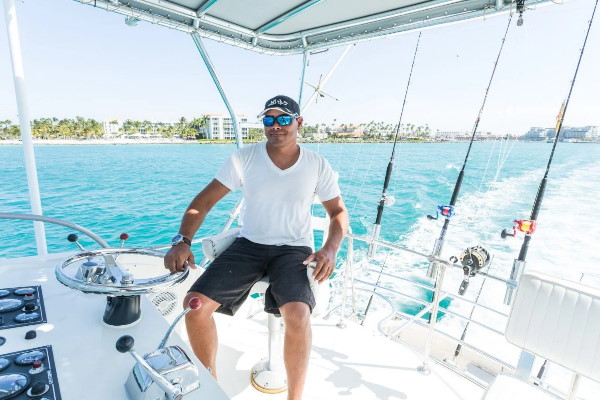
As the captain of a boat, besides knowing How should you pass a fishing boat? you have even more responsibility than the captain of the overtaking boat.
You can neither slow down nor speed up but must maintain a steady pace so that other boats may safely overtake your side and pass through ahead or behind depending upon which direction they are traveling when overtaking happens.
It’s vital for the safe passage that both parties maintain their respective speeds, so no collisions happen! As such Overspeed shouldn’t be done unless necessary due care must take into account what might arise at any moment unexpectedly.
Navigating safely through water can be challenging, and it’s important to stay aware at all times.
One common mistake that captains make is forgetting other factors, such as obstacles or hazards on their way towards another boat which could cause an accident if not avoided smoothly with communication between both parties involved.
In addition, there are many conditions you need to keep in mind when navigating including wind speed/direction, wave height (which may change quickly), current strength, and direction.
The importance of communication shouldn’t be underestimated. It’s not just about avoiding accidents but also being aware enough so you can communicate with other boats or people on the water safely!
Communicating before approaching another vessel ensures that both parties are happy for this interaction to take place, whether it is through discussion over boat passing rules (if applicable), which will ensure everyone has fun while out there enjoying our beautiful waters.
FAQs
Do you often pass other boats when fishing?
Yes, passing other boats is common when fishing. It’s important to maintain a steady pace and watch for any obstacles or hazards in the water so that both parties can navigate safely.
What is the right of way in shallow water?
In shallow water, sailboats have priority over power vessels such as fishing boats. In addition, power vessels must yield to anchored vessels.
What To Do If A Fisherman Waves You Down When You Try To Pass His Boat?
If someone waves you down, it’s important to slow down and then make sure that both parties are happy for the interaction to take place. Communication is key in these situations so everyone can have an enjoyable experience on the water.
Normally, in this case, some fishermen are looking for help with their lines or bait; however, others just want to chat! Regardless of what you choose whether that’s catching up on old stories or getting some fresh air while fishing.
Please make sure your safety first before anything else because this sport isn’t always safe like people think (especially if there was alcohol involved).
How Should You Pass A Fishing Boat That Is Speeding?
When you’re piloting and encounter a fishing boat speeding in the opposite direction, what’s the best way to pass it?
Pilots should take their time when passing another vessel. Here are some tips for safely executing this difficult maneuver:
Make sure that there is enough distance between both vessels – at least three feet (0 1 meter) of clear space should be maintained until they have passed each other;
Signal your intentions before changing lanes so that the fisherman knows you are passing.
Slow down when approaching a fishing boat and do not create waves that could potentially overturn it, but maintain safe speeds while overtaking them as well!
Maintain good passing distance by staying to one side of its direction. This will help avoid any situations where they might bump into each other or cause an accident due to sudden movement from either party involved in their pursuit towards each other (this does happen).
When traffic begins moving again after making sure there aren’t any more fishermen near yours waiting on alert – resume normal driving practices.
Never underestimate just what might go wrong: an accidental touch could start fires or cause drowning damage! So always wear life jackets when near any type of boat because we never know if seasickness will set in during passing times.
Why Can’t Boaters Fish In Harbours And Marinas?
As a boater, you have the right to be on public waters but not private property. And harbors and marinas are private property. If an area is posted as off-limits or if the property owner tells me that they don’t want my fishing boat around them then I will respect those instructions.
In addition, if they are not private property, boaters are not allowed to fish in there due to safety reasons either. This is because these areas can be very congested with boat traffic, which means that loose fishing lines could potentially lead to collisions or other dangerous accidents.
Finally, fishing in these areas often disturbs wildlife habitats and disrupts marine life as well as disturbing any nearby boaters or beachgoers who may be enjoying the area. Therefore, fishing within a harbor or marina is prohibited by law.
What Is The Purpose Of A Navigation Lights System?
A navigation lights system is designed to ensure safety while operating a vessel at night. The purpose of this system is to make sure that vessels can see each other and maintain safe distances when passing in the dark.
Navigation lights must be visible from both sides of the boat so that other boats can identify the position, speed, and direction of travel. These lights also indicate whether a boat is moored or underway as well as its size, meaning larger vessels should display brighter colors than smaller ones.
This helps keep boaters aware of their surroundings while they are out at sea or in port. It’s important to remember that these lights only work if everyone complies with the standard rules for displaying them correctly – otherwise, it makes it harder for everyone to navigate safely.
How do I remember port and starboard?
It’s easy to remember the difference between port and starboard. All you have to do is think of the phrase, “red right returning”. This means that when you’re out at sea and returning home, the red navigation light will always be on your right side (the starboard side).
The other green navigation light will be on the left side of your boat (the port side). With this in mind, it should be easy to remember which one is which!
Another way to remind yourself is by thinking about the words port and starboard itself: Port has four letters and it rhymes with left; Starboard has eight letters and rhymes with the right. So if you keep this in mind, you’ll never get confused when navigating your way back home.
It is important to remember that navigation rules and regulations must be followed at all times. This includes following the “red right returning” rule as well as understanding the port/starboard side of the boat. By following these simple tips, you can ensure a safe return home after an enjoyable day out on the water!
Conclusion
Passing a fishing boat can be tricky, but following the right protocol will ensure everyone’s safety. Remember to always give fishermen the right-of-way and use common sense when approaching them from behind.
If you are a fisherman, it is important to know how other vessels should pass you so that you can stay safe on the water. By following these simple tips, we can all help make our waterways safer for everyone.
Thanks for reading our article “How Should You Pass a Fishing Boat?“. If you have any questions, leave a comment below. You can see more posts on our website here.
Happy fishing!
Further reading
